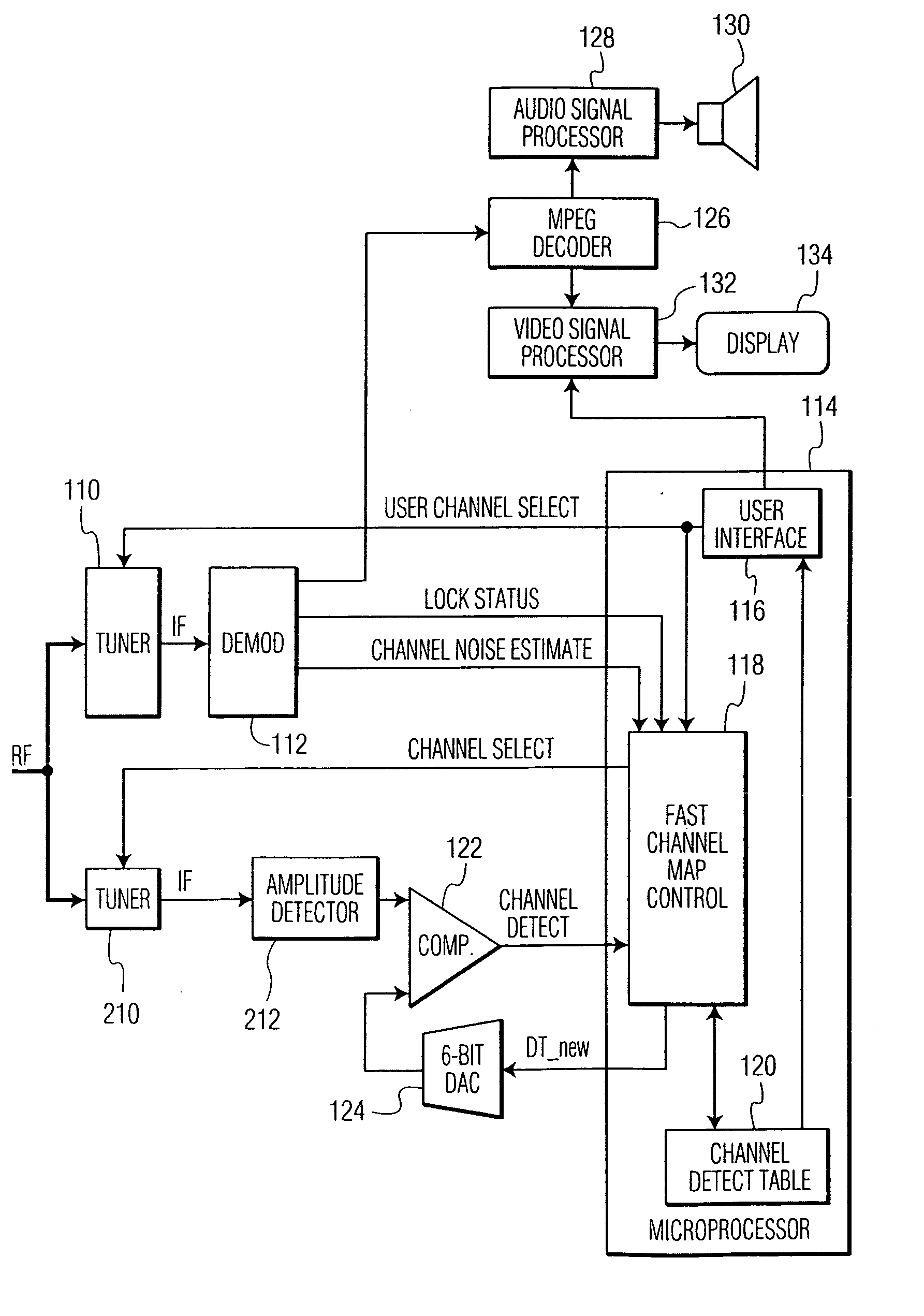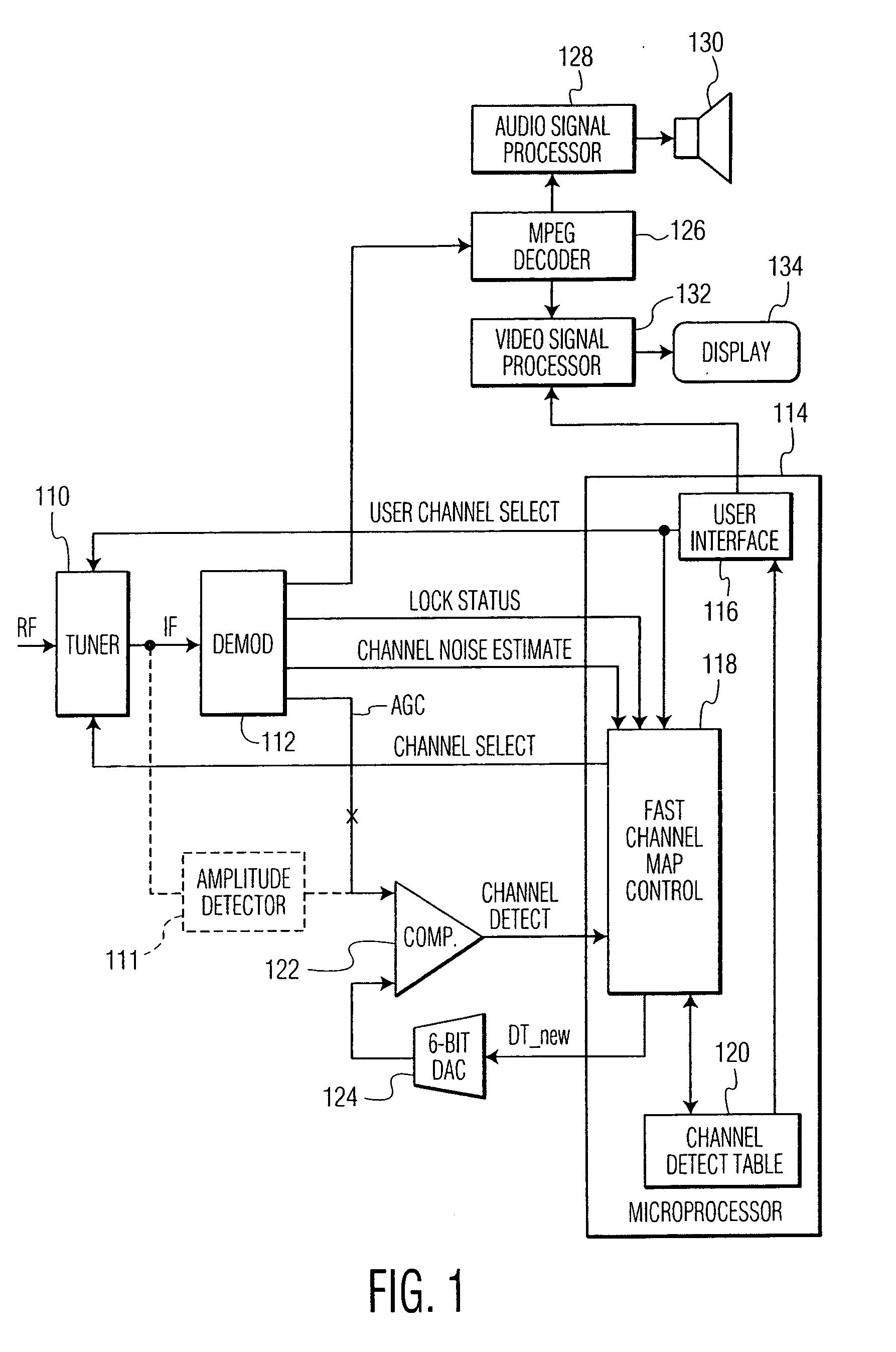Method and apparatus for deriving a channel map for a digital television receiver
a technology of digital television and channel map, which is applied in the field of tuning systems for digital television (dtv) receivers, can solve the problems of not being suitable for dtv receivers, dtv receivers needing more time, and channels being more difficult to decod
- Summary
- Abstract
- Description
- Claims
- Application Information
AI Technical Summary
Benefits of technology
Problems solved by technology
Method used
Image
Examples
Embodiment Construction
[0017]FIG. 1 is a block diagram of a first embodiment of the present invention. In FIG. 1, RF Television signals are received by a tuner 110 and converted to intermediate frequency (IF) signals that are applied to a demodulator 112. The tuner 110 is controlled by two channel select signals, A user channel select signal provided by a user interface process 116 of the microprocessor 114 and a channel select signal provided by a fast channel map control process 118 of the microprocessor 114. In this exemplary embodiment of the invention, the fast channel map is generated only in a setup interval during which the viewer may not use the television receiver.
[0018]The tuner 110 is a conventional cable television or satellite tuner and may be, for example, the CN2811 digital cable tuner RF integrated circuit manufactured by Conexant. The demodulator 112 provides four signals, a demodulated video signal, a lock status signal, a channel noise estimate signal, and an automatic gain control (AG...
PUM
 Login to View More
Login to View More Abstract
Description
Claims
Application Information
 Login to View More
Login to View More - R&D
- Intellectual Property
- Life Sciences
- Materials
- Tech Scout
- Unparalleled Data Quality
- Higher Quality Content
- 60% Fewer Hallucinations
Browse by: Latest US Patents, China's latest patents, Technical Efficacy Thesaurus, Application Domain, Technology Topic, Popular Technical Reports.
© 2025 PatSnap. All rights reserved.Legal|Privacy policy|Modern Slavery Act Transparency Statement|Sitemap|About US| Contact US: help@patsnap.com



